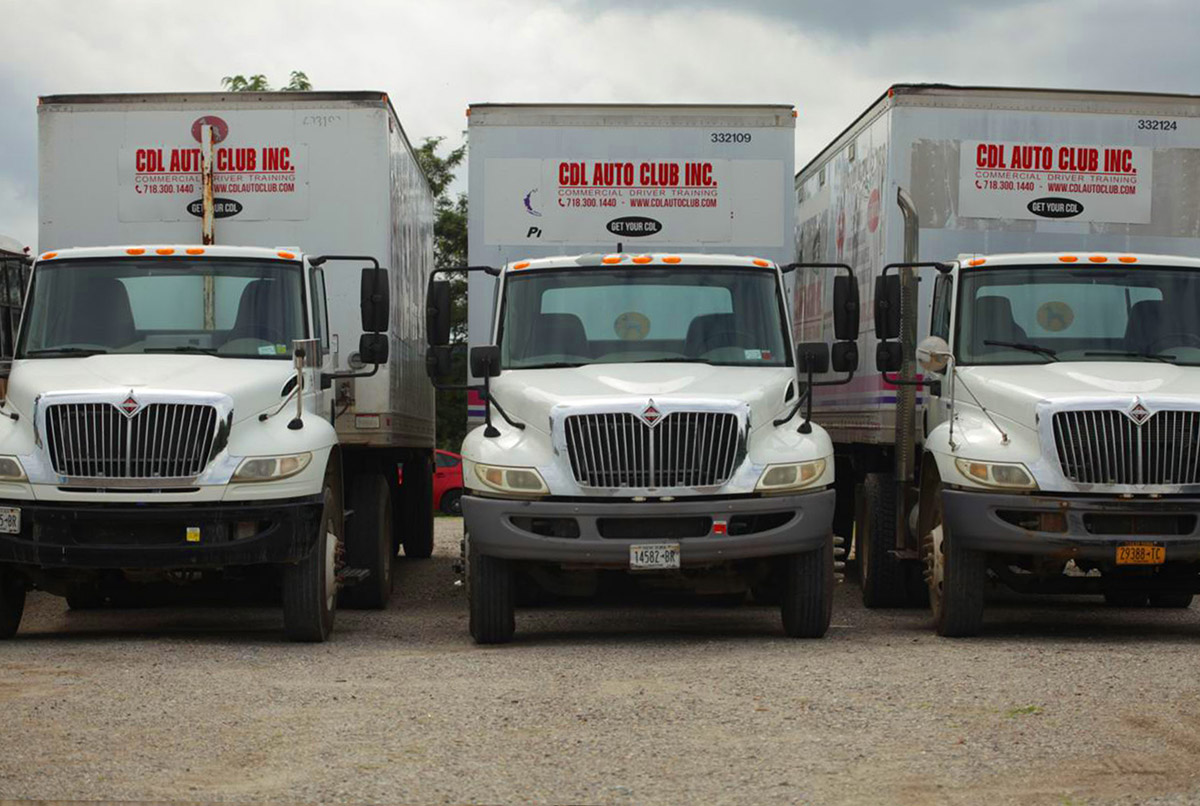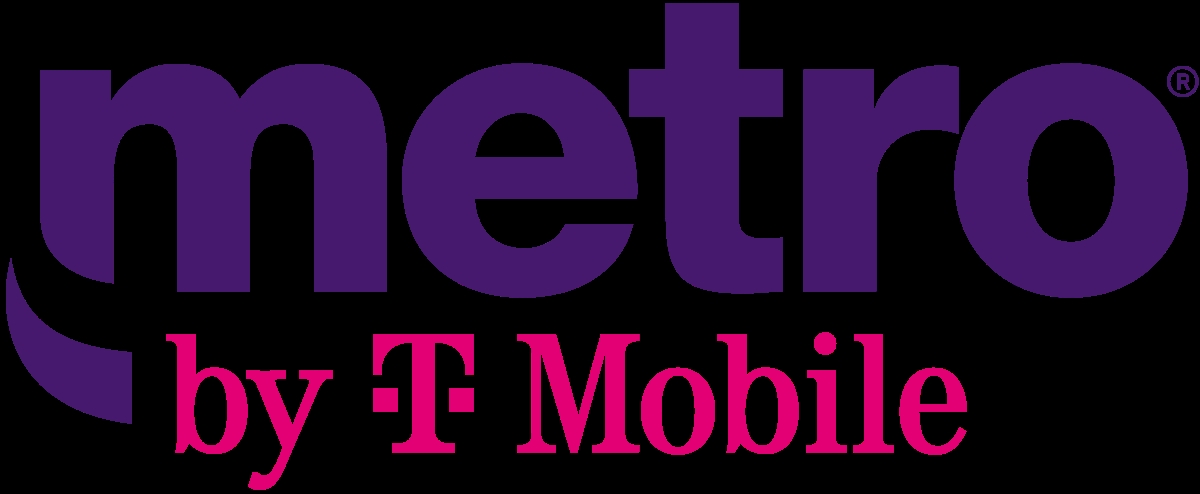

Finance
How To Get Funding For CDL Training
Published: December 22, 2023
Looking to finance your CDL training? Learn how to secure funding and get on the road to a new career in the trucking industry with our comprehensive guide.
(Many of the links in this article redirect to a specific reviewed product. Your purchase of these products through affiliate links helps to generate commission for LiveWell, at no extra cost. Learn more)
Table of Contents
- Introduction
- Understanding the Importance of CDL Training
- Researching and Choosing the Right CDL Training Program
- Exploring Financial Aid and Scholarship Options
- Applying for Federal and State Grants
- Investigating Workforce Development Programs for Funding
- Finding Sponsorship or Employment Opportunities with Trucking Companies
- Utilizing Personal Financing Options
- Securing Loans for CDL Training
- Considering Tuition Reimbursement Programs
- Final Thoughts on Funding for CDL Training
Introduction
Obtaining a Commercial Driver’s License (CDL) is the first step towards a rewarding and lucrative career in the trucking industry. However, the cost of CDL training programs can be a significant barrier for many aspiring truck drivers. Fortunately, there are various funding options available to help individuals overcome this obstacle and pursue their dream of becoming a professional truck driver.
In this article, we will explore different strategies and resources to secure funding for CDL training. Whether you are considering a career change or are a recent high school graduate looking to enter the workforce, understanding the financial options available to you is crucial to kick-start your journey towards a successful trucking career.
CDL training programs provide comprehensive education and hands-on experience, ensuring that individuals are equipped with the skills and knowledge necessary to safely operate commercial vehicles. These programs typically cover various topics such as vehicle inspections, defensive driving techniques, and federal regulations.
While the benefits of CDL training are undeniable, the cost can be a significant hurdle for many individuals. Depending on the program and location, CDL training can range from a few thousand dollars to tens of thousands of dollars. However, with the right approach and research, you can find funding options that suit your financial situation.
Whether you are looking for grants, scholarships, work-study programs, or personal financing options, this article will guide you through the process of securing funding for CDL training. Understanding the importance of CDL training and exploring various financial aid opportunities will help you make informed decisions and ensure a smooth transition into the trucking industry.
Now, let’s dive into the different strategies and resources available to help you fund your CDL training and embark on an exciting career in the trucking industry.
Understanding the Importance of CDL Training
CDL training is not just a mere requirement to obtain a commercial driver’s license; it is a crucial step towards becoming a safe and skilled professional truck driver. The comprehensive education and hands-on experience provided by CDL training programs ensure that drivers are well-prepared to handle the challenges of operating commercial vehicles.
One of the primary reasons why CDL training is essential is because it focuses on teaching and reinforcing the necessary skills and knowledge needed to operate a commercial vehicle safely. During training, students learn about various aspects of trucking, including vehicle inspections, defensive driving techniques, and federal regulations.
Proper vehicle inspections are essential for ensuring that the truck is in optimal condition before hitting the road. CDL training programs teach students how to conduct thorough pre-trip and post-trip inspections, identifying any potential issues that could compromise vehicle safety. By understanding and implementing these inspection protocols, drivers can reduce the risk of accidents caused by mechanical failures or other issues.
Defensive driving techniques are another crucial aspect of CDL training. Truck drivers often face hazardous road conditions, challenging weather, and unpredictable situations. By learning defensive driving techniques, drivers can anticipate potential hazards, react appropriately, and maintain control of their vehicles. This helps prevent accidents and ensures the safety of both the driver and other road users.
Understanding and complying with federal regulations is also a vital component of CDL training. The trucking industry is heavily regulated to maintain safety standards, protect the environment, and ensure fair practices. CDL training programs educate drivers on various federal regulations such as hours-of-service rules, weight restrictions, and cargo securement requirements. Complying with these regulations is not only essential for avoiding penalties but also for maintaining a high level of safety on the roads.
Besides safety and regulatory compliance, CDL training also equips drivers with essential skills to navigate the logistics and operations of the trucking industry. Students learn about route planning, load distribution, and proper handling of cargo. This knowledge is invaluable when it comes to ensuring efficient and successful deliveries, minimizing delays or damage to goods, and maintaining a positive reputation as a professional truck driver.
Overall, CDL training plays a vital role in shaping individuals into competent and responsible truck drivers. It provides a strong foundation of knowledge, skills, and experience needed to navigate the challenges of the trucking industry. By completing a comprehensive CDL training program, individuals not only increase their chances of obtaining a commercial driver’s license but also enhance their employability and set themselves up for a successful career in the trucking industry.
Researching and Choosing the Right CDL Training Program
When embarking on a journey to become a professional truck driver, it is crucial to select the right CDL training program. The quality of your training can significantly impact your career prospects and level of preparedness for the demands of the trucking industry. Therefore, it is important to dedicate time and effort to thoroughly research and evaluate different CDL training programs before making a decision.
Here are some key factors to consider when researching and choosing the right CDL training program:
- Accreditation and Reputation: Look for CDL training programs that are accredited by reputable organizations such as the Professional Truck Driver Institute (PTDI). Accreditation ensures that the program meets industry standards and provides quality education and training. Additionally, consider the program’s reputation within the trucking community and seek reviews or recommendations from current or past students.
- Curriculum and Training Methods: Review the curriculum of the CDL training program. It should cover all necessary topics such as vehicle inspections, driving techniques, and federal regulations. Ensure that the program offers a good balance of classroom instruction and hands-on experience. Practical training should include ample time behind the wheel to practice essential skills.
- Instructor Qualifications: Look for programs that employ experienced and qualified instructors. Instructors should have a deep understanding of the trucking industry and possess the necessary certifications and licenses. They should be able to effectively communicate and demonstrate the skills and knowledge required to become a successful truck driver.
- Facilities and Equipment: Visit the training facility if possible or inquire about the facilities and equipment available. The training center should have well-maintained vehicles that represent the types of rigs you will be driving in your career. The facility should also provide a comfortable learning environment with modern classroom amenities and adequate practice areas.
- Job Placement Assistance: Evaluate the program’s job placement assistance services. A good CDL training program will provide support and resources to help graduates with finding employment opportunities in the trucking industry. Inquire about their job placement rate and the partnerships they have established with trucking companies.
- Cost and Financial Assistance: Consider the cost of the CDL training program and compare it with other programs. Keep in mind that cheaper does not always mean better. Look for programs that offer transparent pricing with no hidden fees. Additionally, inquire about any financial assistance options such as scholarships, grants, or tuition reimbursement programs that may help offset the cost of training.
By thoroughly considering these factors, you can make an informed decision and select a CDL training program that aligns with your goals and offers the best education and training to set you up for success in the trucking industry.
Exploring Financial Aid and Scholarship Options
Financing your CDL training can be a challenge, but there are various financial aid and scholarship options available to help ease the financial burden. Exploring these opportunities can make obtaining your commercial driver’s license more affordable and accessible. Here are some common financial aid and scholarship options to consider:
- Federal Grants: The U.S. Department of Education offers the Federal Pell Grant, which is a need-based grant for individuals pursuing post-secondary education or training. Depending on your financial situation, you may be eligible to receive funding that can be used towards CDL training program costs.
- State Grants: Many states offer grant programs or workforce development initiatives designed to aid individuals in pursuing training and education for in-demand careers. Research state-specific grants that may be available to cover the cost of CDL training.
- Company-Sponsored Scholarships: Some trucking companies offer scholarships or tuition reimbursement programs for individuals who commit to working for them upon completion of their CDL training. These programs are mutually beneficial, as they provide financial support to trainees while also securing a future employment opportunity.
- Private Scholarships: Several organizations and foundations offer scholarships specifically for individuals pursuing a career in the trucking industry. Research and apply for these scholarships, ensuring that you meet the eligibility criteria and provide any required documentation or essays.
- Veteran Benefits: Veterans or active-duty military personnel may be eligible for education and training benefits through the GI Bill or other veterans’ assistance programs. These benefits can often be used towards CDL training, making it more affordable for those who have served in the military.
- Workforce Development Programs: Workforce development programs, administered at the state or local level, offer various initiatives to support individuals in gaining the skills and training needed for sustainable employment. These programs may provide financial assistance or offer subsidized training options for eligible participants.
- Community and Technical College Financial Aid: Many community and technical colleges offer financial aid options for vocational and skills training programs, including CDL training. Explore the financial aid office of your local community college to inquire about any available grants or scholarships.
When exploring financial aid and scholarship options, it’s essential to carefully review the eligibility requirements, application deadlines, and any additional obligations or commitments that may be associated with the funding. Start by filling out the Free Application for Federal Student Aid (FAFSA) to determine your eligibility for federal financial aid programs. Additionally, reach out to CDL training programs or consult with a financial aid advisor to get guidance on funding options specific to your situation.
Remember that while financial aid and scholarships can help offset the cost of CDL training, it is essential to plan your finances wisely. Consider the long-term earning potential of a trucking career and how the investment in CDL training will pay off in the future. With careful research and utilization of available financial aid resources, you can make CDL training more affordable and take a significant step towards a rewarding and prosperous career in the trucking industry.
Applying for Federal and State Grants
One of the most common and fruitful avenues for funding your CDL training is through federal and state grants. These grants provide financial assistance to eligible individuals to cover the costs of education and vocational training programs. Applying for federal and state grants can significantly reduce the financial burden of obtaining your commercial driver’s license. Here’s how to navigate the process:
- Research Available Grants: Start by researching the federal and state grants that are applicable to vocational and career training programs. The U.S. Department of Education’s website is an excellent resource to explore federal grants such as the Federal Pell Grant. Visit your state’s education or workforce development department website to identify state-specific grants for CDL training.
- Complete the FAFSA: The Free Application for Federal Student Aid (FAFSA) is a critical step in the grant application process. Fill out the FAFSA form online, providing accurate information about your financial situation. The information you provide on the FAFSA determines your eligibility for federal grants and other financial aid programs. Be sure to meet the application deadlines to maximize your chances of receiving grant money.
- Gather Required Documentation: In addition to completing the FAFSA, you may need to provide additional documentation to support your grant application. This may include proof of income, tax returns, identification, and other relevant financial information. Ensure that you gather and submit all necessary documents as per the grant application requirements.
- Submit Applications: Once you have identified the grants you are eligible for and gathered all the required documentation, complete and submit the grant applications. Pay close attention to the application deadlines and any specific instructions provided. Mistakes or delays in submitting applications can result in missed opportunities for funding.
- Monitor Application Status: After submitting your grant applications, keep track of their status. Check the online portals or contact the grant offices to inquire about the progress of your application. Stay proactive and follow up if required to ensure that your application is being processed in a timely manner.
- Review Award Notifications: If your grant application is successful, you will receive an award notification outlining the amount of grant money you will receive. Take note of any terms or conditions associated with the grant, such as maintaining a certain GPA or enrolling in an eligible training program.
- Utilize the Grant Funds: Once you receive the grant money, use it to pay for your CDL training program costs. Follow any guidelines or restrictions outlined by the grant program to ensure compliance. Keep track of your spending and retain any receipts or documentation related to the use of the grant funds.
- Stay Informed and Seek Assistance: Grant requirements and processes may vary, so it’s essential to stay informed and updated on any changes. Seek guidance from financial aid offices or grant specialists who can provide further assistance and answer any questions you may have throughout the process.
Applying for federal and state grants can be a lengthy and competitive process, so it is crucial to start early, be thorough in your applications, and submit them within the designated timeframes. By leveraging these grant opportunities, you can significantly reduce the financial burden of CDL training and take a step closer to a successful career in the trucking industry.
Investigating Workforce Development Programs for Funding
Workforce development programs are initiatives implemented at the state or local level to assist individuals in gaining the skills and training necessary for sustainable employment. These programs often provide funding options and support for individuals pursuing vocational and career training, including CDL training. Investigating workforce development programs can be a valuable approach to secure funding for your CDL training expenses. Here’s how you can explore these programs:
- Research Available Programs: Start by researching the workforce development programs available in your state or local area. These programs may go by different names, such as job training programs, career centers, or workforce investment boards. Visit their websites, explore their offerings, and determine if they provide funding or financial assistance for CDL training.
- Eligibility Requirements: Review the eligibility requirements for each workforce development program. Some programs may have specific criteria related to income, education level, age, or employment status. Ensure that you meet the eligibility criteria before proceeding with the application process.
- Attend Information Sessions: Workforce development programs often host informational sessions or workshops to provide more details about their offerings and funding options. Attend these sessions to learn about the available resources, speak to program representatives, and clarify any questions you may have.
- Connect with Career Advisors: Contact career advisors or staff members at the workforce development programs to discuss your interest in CDL training and inquire about funding opportunities. These professionals have expertise in the industry and can guide you through the application process and provide insights into available funding options.
- Complete Application Requirements: Once you have identified a suitable workforce development program, familiarize yourself with the application process and the required documentation. Prepare all necessary documents, such as identification, proof of income, or educational transcripts, as per the program’s guidelines. Ensure that you submit your application within the designated timeframe.
- Follow Up: After submitting your application, it’s essential to follow up with the workforce development program to inquire about the status of your application. Stay proactive and reach out to program representatives if you have not received any updates within a reasonable time frame. This demonstrates your commitment and interest in securing funding.
- Explore Additional Support Services: Workforce development programs offer more than just financial assistance. They often provide additional support services such as job placement support, resume building workshops, and interview preparation. Take advantage of these resources to enhance your chances of finding employment after completing your CDL training.
Investigating workforce development programs for funding can be a valuable strategy to help finance your CDL training. These programs are designed to support individuals seeking career training and can provide crucial financial support. However, it’s important to note that availability and funding amounts may vary depending on the program and your specific circumstances. Stay proactive, be aware of deadlines, and be prepared to provide any necessary documentation to increase your chances of securing funding through workforce development programs.
Finding Sponsorship or Employment Opportunities with Trucking Companies
One effective way to secure funding for CDL training is by pursuing sponsorship or employment opportunities with trucking companies. Many trucking companies offer sponsorship programs where they cover some or all of the CDL training costs in exchange for a commitment to work for them upon completion of the training. Here’s how you can find sponsorship or employment opportunities with trucking companies:
- Research Trucking Companies: Start by researching trucking companies that offer sponsorship or employment opportunities for aspiring truck drivers. Look for well-established companies with solid reputations in the industry. Research their sponsorship programs, employment requirements, benefits, and training schedules.
- Attend Job Fairs and Recruitment Events: Trucking companies often participate in job fairs and recruitment events to connect with potential candidates. Attend these events to learn more about their sponsorship programs and discuss available opportunities with company representatives. Be prepared with copies of your resume, driver’s license, and any relevant certifications.
- Reach Out to Trucking Companies: Don’t wait for job fairs; take the initiative to reach out to trucking companies directly. Visit their websites and look for information on sponsorship programs or employment opportunities. Contact their recruitment or human resources departments to inquire about available positions and sponsorship options.
- Show Your Commitment: When approaching trucking companies for sponsorship, demonstrate your dedication to becoming a professional truck driver. Highlight any relevant experience, your passion for the industry, and your commitment to safety and compliance. Emphasize your willingness to work hard and contribute positively to the company.
- Consider Local or Regional Companies: While larger national trucking companies may have established sponsorship programs, don’t overlook local or regional companies. These companies may be more accessible and have less competition for sponsorship opportunities. Research local trucking companies in your area and inquire about their sponsorship programs.
- Understand the Terms and Conditions: Before committing to a sponsorship program or employment opportunity, carefully review and understand the terms and conditions. Some companies may require a work contract for a specific duration after completing CDL training, while others may have repayment agreements if the commitment is not fulfilled. Ensure that you are comfortable with the terms before proceeding.
- Utilize Online Resources: Online job boards and trucking industry-specific websites can be valuable resources for finding sponsorship or employment opportunities with trucking companies. Create a professional online profile, upload your resume, and actively search for companies offering sponsorship programs or entry-level positions.
- Network and Seek Referrals: Leverage your network and seek referrals from people in the trucking industry. Connect with current or former truck drivers, attend trucking industry events, and join online forums or communities where you can learn from experienced professionals. Referrals can increase your chances of securing sponsorship or finding employment opportunities with reputable trucking companies.
Securing sponsorship or employment opportunities with trucking companies can be a win-win situation. You receive financial assistance for CDL training, and the company gains a qualified and committed driver. However, it’s important to thoroughly research potential companies, understand the terms and conditions, and make an informed decision that aligns with your long-term career goals. By exploring these opportunities and building connections with trucking companies, you can increase your chances of funding your CDL training and launching a successful career in the trucking industry.
Utilizing Personal Financing Options
If you are unable to secure funding through grants, scholarships, or sponsorship programs, personal financing options can be a viable alternative to fund your CDL training. While it requires a financial investment on your part, personal financing allows you to take control of your training and pursue your career goals. Here are some personal financing options to consider:
- Savings: If you have savings set aside, consider using them to cover the cost of CDL training. Evaluate your financial situation and determine how much you can comfortably allocate towards your training expenses.
- Personal Loans: Personal loans from banks or credit unions are another option to finance your CDL training. Explore the loan options available to you and compare the interest rates and repayment terms. Ensure that you have a clear understanding of the loan terms and your ability to make the monthly payments.
- Credit Cards: Some individuals may choose to put their CDL training expenses on a credit card. If you decide to use a credit card, make sure you have a plan to pay off the balance to avoid accumulating high-interest debt. Look for credit cards with low-interest rates or introductory offers to minimize the cost.
- Payment Plans: Some CDL training programs offer flexible payment plans where you can spread out the cost of training over a period of time. Inquire with the training schools about any payment plan options available and evaluate if they align with your budget.
- Crowdfunding: Consider utilizing crowdfunding platforms to raise funds for your CDL training. Create a compelling campaign explaining your career goals, why you need funding, and how it will impact your future. Share your campaign with family, friends, and social networks to garner support.
- Part-Time Employment: If feasible, consider taking on part-time employment in addition to your CDL training. This can help generate income to cover the training expenses while allowing you to pursue your career goals simultaneously. Look for flexible jobs that accommodate your training schedule.
- Work-Study Programs: Some CDL training programs offer work-study options where you can work part-time at the training facility or with their affiliated employers. This can provide financial assistance while gaining hands-on experience in the industry.
- Family or Personal Support: Reach out to your family or trusted individuals who may be willing to provide financial support for your CDL training. Communicate your goals and demonstrate your dedication to pursuing a career in the trucking industry. Consider creating a written agreement outlining repayment terms if necessary.
Utilizing personal financing options requires careful financial planning and consideration. Before committing to any financing method, evaluate your financial stability, repayment capabilities, and the long-term return on investment of your CDL training. Understand the terms and conditions associated with each financing option and ensure that it aligns with your overall financial goals.
Remember, personal financing may require sacrifices and adjustments to your budget, but it can be a worthwhile investment in your future career as a professional truck driver. With diligent financial planning and responsible decision-making, you can successfully fund your CDL training and embark on a fulfilling and rewarding journey in the trucking industry.
Securing Loans for CDL Training
If you’re unable to obtain funding through grants, scholarships, or personal financing options, securing a loan can be a viable solution to fund your CDL training expenses. While taking out a loan requires careful financial planning, it provides you with the opportunity to pursue your career goals as a professional truck driver. Here’s how you can go about securing a loan for CDL training:
- Evaluate Loan Options: Research and compare different loan options available to finance your CDL training. Look for lenders that specialize in career training or education loans. Consider factors such as interest rates, repayment terms, and any associated fees.
- Collateral or Unsecured Loan: Loans can be either collateral-based, where you offer valuable assets as security, or unsecured, where no collateral is required. Collateral-based loans may provide lower interest rates, but they carry the risk of losing the pledged assets if you default on the loan. Evaluate your assets and determine if you have any that can be used as collateral.
- Review Loan Requirements: Pay close attention to the eligibility criteria and documentation requirements for the loan. Lenders may have specific income and credit score requirements, as well as the need for proof of enrollment in an accredited CDL training program.
- Check Loan Terms and Interest Rates: Understand the terms of the loan, including repayment duration, interest rates, and any applicable fees. Evaluate the overall cost of the loan and determine if it fits within your financial plan.
- Get Creditworthy Co-signer: If you have limited credit history or a low credit score, having a creditworthy co-signer can increase your chances of loan approval. A co-signer assumes responsibility for the loan if you default, so choose someone who trusts and supports your career aspirations.
- Apply for the Loan: Once you have decided on a loan option and prepared the necessary documentation, submit your loan application. Be prepared to provide personal and financial information to the lender, including income verification, employment details, and identification documents.
- Read and Understand the Loan Agreement: Carefully review the loan agreement before signing. Make sure you understand the repayment terms, interest rates, and any penalties for late payments or defaults. Seek clarifications from the lender if needed.
- Attend CDL Training: Once your loan is approved and funds are disbursed, enroll in a reputable CDL training program and start your training. Make the most of your time and gain the skills and knowledge needed to succeed as a professional truck driver.
- Track Loan Repayments: Stay organized and keep track of your loan repayments to ensure timely payments. Create a repayment plan and budget accordingly to meet your financial obligations. Consider setting up automatic payments or reminders to avoid missed payments.
Remember, borrowing money through a loan should be well-thought-out and financial viability should be carefully considered. Prioritize finding a reputable lender, understanding the terms and conditions, and creating a solid plan for loan repayment. By securing a loan for your CDL training, you can invest in yourself and your future career as a professional truck driver.
Considering Tuition Reimbursement Programs
Another viable option for funding your CDL training is to consider tuition reimbursement programs. These programs are typically offered by trucking companies as an incentive to recruit and retain qualified drivers. By taking advantage of tuition reimbursement programs, you can reduce the financial burden of CDL training and potentially have the training costs fully or partially reimbursed. Here’s what you need to know when considering tuition reimbursement programs:
- Research Trucking Companies: Look for trucking companies that offer tuition reimbursement programs. Explore their eligibility requirements, such as minimum employment duration, specific driving experience, or performance criteria.
- Understand Reimbursement Terms: Each company’s tuition reimbursement program may have different terms and conditions. Review the reimbursement policy to understand the qualifying criteria, reimbursement amount, and the process for submitting reimbursement requests.
- Choose a Reputable Trucking Company: Prioritize working with a reputable trucking company that has a solid track record of honoring its tuition reimbursement commitments. Research the company’s reputation, driver reviews, and their overall commitment to employee development and well-being.
- Enroll in an Eligible CDL Training Program: Before starting your CDL training, ensure that the program you choose is eligible for tuition reimbursement. Companies may have specific criteria such as accreditation or program length. Confirm with the trucking company that your chosen CDL training program aligns with their reimbursement guidelines.
- Complete the Hiring Process: Apply and go through the hiring process with the trucking company. If offered employment, carefully review the employment agreement and ensure it includes the details of the tuition reimbursement program, including reimbursement amounts and any contractual obligations.
- Submit Reimbursement Requests: Once you meet the terms for reimbursement, submit the necessary documentation to the trucking company. This typically includes proof of completion of the CDL training program, payment receipts, and any other required paperwork.
- Continue Employment with the Company: Many tuition reimbursement programs require that you remain employed with the trucking company for a designated period after completing your training. Be sure to fulfill any employment obligations specified in your agreement to ensure full reimbursement.
- Keep Track of Reimbursement Progress: Stay informed about the reimbursement process and keep track of your reimbursement requests. Maintain copies of all relevant documentation and maintain open communication with the trucking company’s reimbursement department.
- Manage Loan Payments in the Meantime: If you have to pay for your CDL training upfront, consider personal financing options, grants, or loans to cover the expenses until you receive tuition reimbursement. Keep track of your loan or financial obligations and plan your finances accordingly.
- Maximize the Benefits of Tuition Reimbursement: Take advantage of the opportunity to enhance your skills and knowledge as a truck driver. Apply what you have learned during your CDL training and continue to develop professionally. Consider additional training or certifications that could further enhance your career prospects.
Tuition reimbursement programs can be an excellent way to finance your CDL training as long as you meet the requirements and fulfill the obligations of the program. It’s important to choose a reputable trucking company that offers fair and transparent reimbursement policies. By leveraging these programs, you can significantly reduce the financial burden of CDL training while entering the trucking industry with a solid foundation for success.
Final Thoughts on Funding for CDL Training
Securing funding for CDL training can be a crucial step towards launching a successful career as a professional truck driver. While the cost of training programs may initially seem daunting, there are various funding options available to assist you in pursuing your goals. Consider grants, scholarships, sponsorship programs, personal financing, and tuition reimbursement as potential avenues to fund your CDL training. By thoroughly researching and exploring these options, you can find the right financial support that aligns with your needs and circumstances.
It’s essential to conduct thorough research and evaluate the different funding options based on factors such as eligibility criteria, repayment terms, and long-term financial implications. Consider reaching out to trucking companies, financial aid offices, or career advisors for guidance and insights into available resources.
Additionally, be proactive in budgeting and financial planning. Understand the full cost of CDL training, including any additional expenses such as transportation or accommodations. Consider the potential return on investment in terms of future job prospects and earning potential as a truck driver.
Remember, funding for CDL training is an investment in your future career. While it may require financial sacrifices or take time to secure the necessary funds, it opens doors to a rewarding and financially lucrative industry. Take advantage of the opportunities available to you, and be proactive in pursuing your dream of becoming a professional truck driver.
Lastly, once you have secured funding, make the most of your CDL training. Dedicate yourself to learning and honing the necessary skills to thrive in the trucking industry. Stay updated with industry trends and regulations, continuously improve your driving abilities, and seek growth opportunities throughout your career.
By utilizing the funding options discussed in this article and maintaining a determined mindset, you can overcome the financial barriers and embark on a fulfilling and prosperous journey in the world of truck driving.














